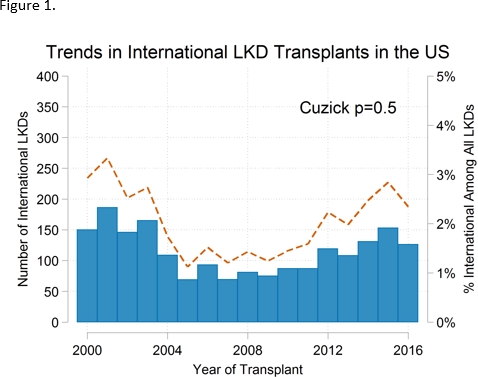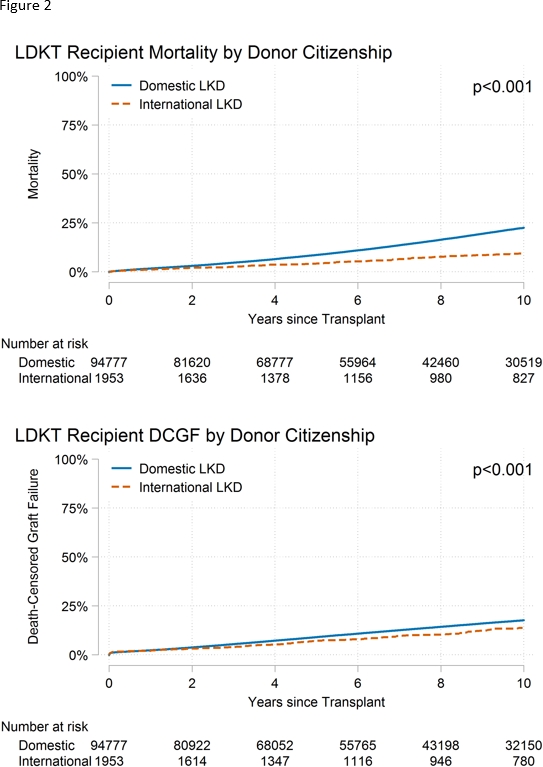Landscape of Living Donor Kidney Transplantation with International Donors in the United States
1JHU, Baltimore
2Villanova University, Villanova
3SLU, St. Louis.
Meeting: 2018 American Transplant Congress
Abstract number: 48
Keywords: Donors, Graft failure, Kidney transplantation, marginal, Mortality
Session Information
Session Name: Concurrent Session: Kidney Living Donor: Selection
Session Type: Concurrent Session
Date: Sunday, June 3, 2018
Session Time: 2:30pm-4:00pm
 Presentation Time: 2:42pm-2:54pm
Presentation Time: 2:42pm-2:54pm
Location: Room 606/607
International living kidney donors (LKDs) can donate to candidates listed in the US. Recently, concerns were raised that international LKD organ-recipients might not achieve the same 1-year patient and graft survival rates as non-international LKD organ-recipients. Moreover, international LKDs have a higher risk of not meeting OPTN/UNOS donor follow-up guidelines, further increasing the regulatory risk for transplant programs.
METHODS: Using SRTR (1/2000-12/2016), we identified 96,730 adult living donor kidney transplants (LDKTs). We compared international (non-citizen, non-resident) and non-international LDKT characteristics using chi-squared and rank-sum tests and recipient death-censored graft failure (DCGF) and mortality using the Kaplan-Meier method and Cox regression.
RESULTS: The frequency of international LDKTs (N=1,953) has not changed between 2000 and 2016 (p=0.5) (Figure 1). International LKDs were more likely to be male, Hispanic, younger, have lower BMI, have higher eGFR, and be biologically related than non-international LKDs (all p<0.001, Table 1). International LKDs organ-recipients had lower DCGF (5-year DCGF: 7.2% vs. 9.1%, p<0.001; aHR: 0.620.760.92) and mortality risk (5-year mortality: 4.3% vs. 8.7%, p<0.001; aHR: 0.320.410.52) (Figure 2). International LKDs who donated in the year of 2013 had 38.5% 6-month follow-up, 36.3% 12-month follow-up, and 37.2% 24-month follow-up, which were lower than non-international LKDs (all p<0.05).
CONCLUSION: International donor kidney recipients have lower graft failure and mortality risk; however, international donors have low rates of follow-up. Continued use of international donors should be paired with improved methods of international donor engagement post-nephrectomy.
CITATION INFORMATION: Thomas A., Henderson M., Shaffer A., Massie A., Koons B., Lentine K., Segev D., Al Ammary F. Landscape of Living Donor Kidney Transplantation with International Donors in the United States Am J Transplant. 2017;17 (suppl 3).
To cite this abstract in AMA style:
Thomas A, Henderson M, Shaffer A, Massie A, Koons B, Lentine K, Segev D, Ammary FAl. Landscape of Living Donor Kidney Transplantation with International Donors in the United States [abstract]. https://atcmeetingabstracts.com/abstract/landscape-of-living-donor-kidney-transplantation-with-international-donors-in-the-united-states/. Accessed December 14, 2025.« Back to 2018 American Transplant Congress


